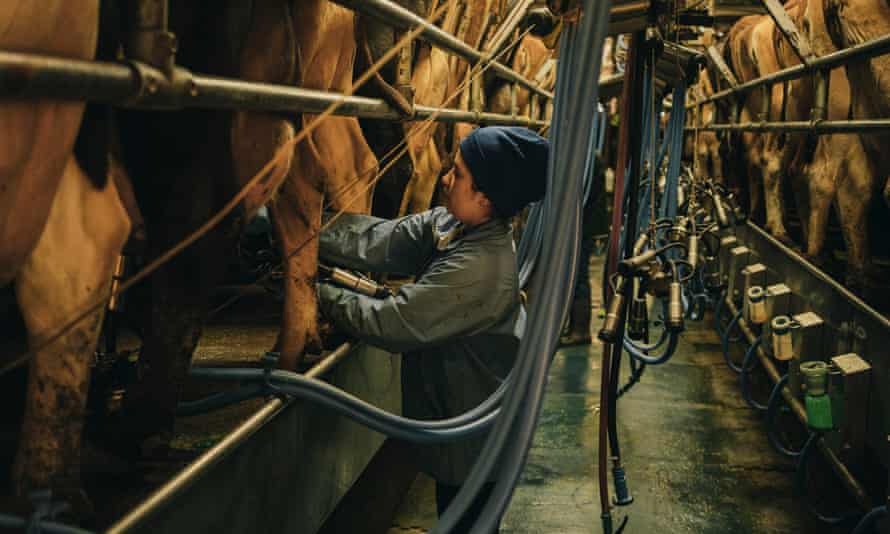90% of global farm subsidies damage people and planet, says UN
Almost half a trillion dollars of support a year harms people’s health, the climate and drives inequality

Almost 90% of the $540bn in global subsidies given to farmers every year are “harmful”, a startling UN report has found.
This agricultural support damages people’s health, fuels the climate crisis, destroys nature and drives inequality by excluding smallholder farmers, many of whom are women, according to the UN agencies.
The biggest sources of greenhouse gas emissions, such as beef and milk, received the biggest subsidies, the report said. These are often produced by large industrialised groups that are best placed to gain access to subsidies.
Without reform, the level of subsidies was on track to soar to $1.8tn (GBP1.3tn) a year by 2030, further harming human wellbeing and worsening the planetary crisis, the UN said.
Support for the “outsized” meat and dairy industry in rich countries must be reduced, while subsidies for polluting chemical fertilisers and pesticides must fall in lower-income countries, the analysis said.
The report, published before a UN food systems summit on 23 September, said repurposing the subsidies to beneficial activities could “be a game changer” and help to end poverty, eradicate hunger, improve nutrition, reduce global heating and restore nature. Good uses of public money could include supporting healthy food, such as vegetables and fruit, improving the environment and supporting small farmers.
Numerous analyses in recent years have concluded the global food system is broken, with more than 800 million people experiencing chronic hunger in 2020 and 3 billion unable to afford a healthy diet, while 2 billion people are obese or overweight, and a third of food is wasted. The total damage caused has been estimated at $12tn a year, more than the value of the food produced.
The report was published by the UN Food and Agriculture Organization (FAO), the UN Development Programme (UNDP) and the UN Environment Programme (UNEP) and is an underestimate of the total subsidies in the food system, as it only includes those for which reliable data is available in 88 countries.
“This report is a wake-up call for governments around the world to rethink agricultural support schemes to make them fit for purpose to transform our agri-food systems and contribute to the four betters: better nutrition, better production, better environment and a better life,” said Qu Dongyu, the FAO director general.
The UNDP head, Achim Steiner, said redirecting the subsidies would also boost the livelihoods of the 500 million smallholder farmers worldwide by ensuring a more level playing field with industrial agriculture.
Marco Sanchez, the FAO deputy director and an author of the report, said: “Current support to farms needs transforming for today’s realities. For instance, the US is now aligning to the Paris climate agreement, which is very welcome, but there is no way they can achieve those climate goals if they don’t tackle the food industries.”
Joy Kim, at UNEP, said: “Agriculture contributes a quarter of greenhouse gas emissions, 70% of biodiversity loss and 80% of deforestation.” She said international finance pledges for climate change were $100bn a year and $5bn a year for deforestation. “But governments are providing $470bn [in farm support] that has a huge damaging impact on climate and nature.”
The report found that between 2013 and 2018, support to farmers totalled an average of $540bn a year, of which 87% ($470bn) was “harmful”. This included price incentives for specific livestock and crops, subsidies for fertilisers and pesticides, and distorting export subsidies and import tariffs.
These damage health by promoting the overconsumption of meat in rich countries and overconsumption of low-nutrition staples in poorer ones. “If you are not promoting fruits and vegetables, then in relative terms it is very expensive for the consumer to eat healthily,” said Sanchez. “That’s why 2 billion people in the world cannot afford a healthy diet.”
The report highlighted some cases of positive action, such as moves in China to cut chemical fertiliser and pesticide use, and the zero budget natural farming policy in the Indian state of Andhra Pradesh.
The UK is also shifting its GBP3bn-a-year subsidy scheme towards environmental goals. Some subsidies should also be redirected to help farmers cope with the increasing extreme weather impacts of the climate crisis, the report said.
The EU is to pay EUR387bn (GBP330bn) in farm subsidies from 2021 to 2027, but last Thursday green MEPs in Brussels said a planned overhaul failed to align agriculture with EU climate change targets.
Overhauling farm support in the face of vested interests was hard, said Sanchez, but could be done by spelling out the costs to governments, by consumers demanding better and by financial institutions stopping lending to damaging activities.
“The true costs of our food system have been hidden for too long,” said Morgan Gillespy, the programme director at the Food and Land Use Coalition. The damage caused to nature by subsidy regimes was $4tn to $6tn, according to a recent review, she said.
“Changes in subsidy regimes are likely to be politically controversial and could spark protests among farmers and other groups,” Gillespy said. “But just because it is hard, doesn’t mean it shouldn’t happen. The facts are now clear.”
Consultation with farmers was vital, she said. Copa-Cogeca, the largest interest group for Europe’s farmers did not respond to a request for comment.
A separate report, published by the World Resources Institute in August, said without reform, farm subsidies “will render vast expanses of healthy land useless”.
It said: “Given that the world will have 10 billion people by 2050, the loss of this land will make it impossible to feed the global population.”
Instead, farmers should be supported to restore their land through techniques such as agroforestry, it said.